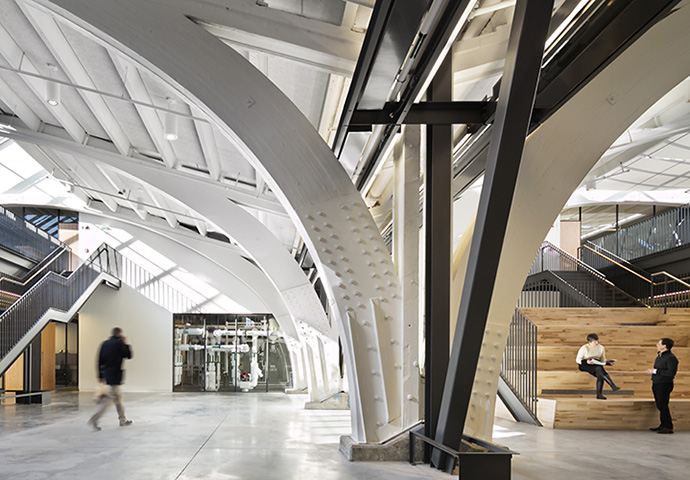Demonstration Projects Take Shape
Hidden City's Vivienne Tang reviews two in-progress projects at the Energy Efficient Buildings Hub in Philadelphia--both of which will serve as demonstration projects for energy-efficiency strategies in commercial buildings.
Testing And Proving Building Innovation At The Navy Yard
Philadelphians spend 29 percent more on energy costs in commercial buildings than Americans do on average and energy spending is only higher in New York City, Washington, DC, and Boston. The Energy Efficient Buildings Hub–know as the EEB Hub–headquartered at the Navy Yard, wants to change that.
The federally-funded 27-member consortium led by Penn State University was the first Energy Innovation Hub created by the Obama administration. The goal of the project is to develop affordable tools for design, construction, and operation that will significantly reduce energy waste–and therefore costs–in commercial buildings under 250,000 square feet. Now, several years after its launch, the EEB Hub will try to prove its point by creating two demonstration projects–one retrofit and one new construction–on the Navy Yard campus. Both buildings, substantially funded through state grants given to Penn State during the Rendell administration, are expected to be open by spring 2014.
The project's intent is to reach the architects, engineers, real estate developers, and building contractors involved in building medium scale commercial and residential buildings across the region and by 2020 to reduce energy consumption in commercial buildings region-wide by 20 percent.
The first of the demonstration buildings, Navy Yard Building 661, will also serve as the EEB Hub's headquarters. It's an adaptive reuse of a former officers' recreation hall shuttered in 1995. The project there, designed by architects KieranTimberlake, will ostensibly demonstrate how to retrofit a building to make it more energy efficient at the same time. At present, Building 661 is a shell of its former self, but like a caterpillar in a cocoon, it will emerge from this state an entirely different beast.
“Because this is a demonstration project, it became clear to us that this was an opportunity to create an architecture that would provide ‘infrastructure' for the didactic display of several mechanical approaches and to foster the seamless collaboration among EEB Hub's task teams,” says David Riz, KieranTimberlake's principal architect in charge of the EEB buildings. “Therefore, our work as architects on this project is less about detailing and materials and more about identifying impactful changes, such as removing a central wall to create a large day lit atrium, and inserting a new mezzanine for meeting space that also serves as an armature for mechanical systems.”
Continue reading





